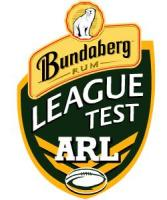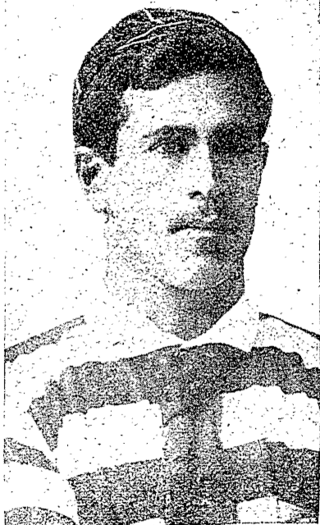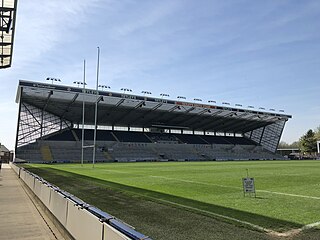
Stadium Australia, currently known as Accor Stadium for sponsorship purposes, is a multi-purpose stadium located in the Sydney Olympic Park, in Sydney, Australia. The stadium, which in Australia is sometimes referred to as Sydney Olympic Stadium, Homebush Stadium or simply the Olympic Stadium, was completed in March 1999 at a cost of A$690 million to host the 2000 Summer Olympics. The Stadium was leased by a private company, the Stadium Australia Group, until the Stadium was sold back to the NSW Government on 1 June 2016 after NSW Premier Michael Baird announced the Stadium was to be redeveloped as a world-class rectangular stadium. The Stadium is owned by Venues NSW on behalf of the NSW Government.

Canberra Stadium is a facility primarily used for rugby league and rugby union games, located adjacent to the Australian Institute of Sport in Canberra, the capital of Australia. It is the largest sports venue by capacity in Canberra.

The Sydney Football Stadium, commercially known as Allianz Stadium and previously Aussie Stadium, was a football stadium in Moore Park, Sydney, Australia. Built in 1988 next to the Sydney Cricket Ground, the stadium was Sydney's premier rectangular field venue for rugby league, rugby union, and soccer.

Mount Smart Stadium is a multipurpose stadium in Auckland, New Zealand. It is the main home ground of the New Zealand Warriors of the National Rugby League, and occasionally hosts rugby union and international rugby league matches. Built within the quarried remnants of the Rarotonga / Mount Smart volcanic cone, it is located 10 kilometres south of the city centre, in the suburb of Penrose.

Central Energy Trust Arena is the current name of the 180,000 square metre publicly owned recreational complex just west of the Palmerston North city centre in the Manawatū-Whanganui region of New Zealand.

Eden Park is New Zealand's largest sports stadium, with a capacity of 50,000. Located in central Auckland, New Zealand's largest city, it is three kilometres southwest of the CBD, on the boundary between the suburbs of Mount Eden and Kingsland. It opened in 1900. The south stand was rebuilt for the 2011 Rugby World Cup. The stadium is used primarily for rugby union in winter and cricket in summer, and it has hosted rugby league and association football matches. It is owned by Eden Park Trust Board, whose headquarters are located in the stadium.

Wellington Regional Stadium is a major sporting venue in Wellington, New Zealand. The stadium's bowl site size is 48,000 m2 (520,000 sq ft).

Newcastle International Sports Centre, known as McDonald Jones Stadium for sponsorship reasons, is a multi-purpose sports stadium located in Newcastle, Australia. The ground is home to the Newcastle Knights and Newcastle Jets FC (A-League). It is owned by the New South Wales Government and is administered by Venues NSW. Due to past sponsorship deals, the ground has been previously known as Marathon Stadium, EnergyAustralia Stadium, Ausgrid Stadium and Hunter Stadium. Newcastle International Sports Centre is also known as Newcastle Stadium when in use during AFC competitions due to conflicting sponsorship reasons.

Hindmarsh Stadium is a multi-purpose stadium in Hindmarsh, an inner western suburb of Adelaide, South Australia. It is the home of the Australian A-League team, Adelaide United.

The Anzac Test is an annual rugby league football test match played annually between Australia and New Zealand for the Bill Kelly Memorial Trophy.

The Willows Sports Complex, last known as 1300SMILES Stadium through sponsorship, was a grass football stadium situated in Townsville, Queensland, Australia. It was used predominantly as a rugby league ground as the home ground of the North Queensland Cowboys National Rugby League club. The ground was also used for rugby union and soccer. From 2009 to 2011, A-League football club North Queensland Fury called it home. Since inception as a rugby league ground, the ground had several sponsored naming rights: Stockland Stadium (1995–97), Malanda Stadium (1998) and Dairy Farmers Stadium (1999–2013). The last NRL match to be played at 1300SMILES Stadium was on Thursday 29 August 2019 between the North Queensland Cowboys and Canterbury Bankstown Bulldogs.

FMG Stadium Waikato is a major sporting and cultural events venue in Hamilton, New Zealand, with a total capacity of 25,800. Four areas contribute to this capacity: The Brian Perry Stand holding 12,000, the WEL Networks Stand holding 8,000, the Goal Line Terrace holding 800 and the Greenzone can hold up to 5,000 people. The capacity can be extended, however, by temporarily adding 5,000 seats to the Goal Line Terrace area. The stadium, owned by the Hamilton City Council, regularly hosts two rugby union teams:

Olympic Park Stadium was a multi-purpose outdoor stadium located on Olympic Boulevard in inner Melbourne. The stadium was built as an athletics training venue for the 1956 Olympics, a short distance from the MCG, which served as the Olympic Stadium. Over the years it was the home of rugby league side, Melbourne Storm and the A-League team, Melbourne Victory; throughout its life the stadium played host to athletics. Olympic Park Stadium was located in Olympic Park, which is part of the Melbourne Sports and Entertainment Precinct.

The Bay of Plenty Rugby Union is the governing body for rugby union in a portion of the Bay of Plenty Region of New Zealand. Its colours are dark blue and yellow in a hooped design. The BOPRU govern the running of the Bay of Plenty representative team which have won New Zealand's first-tier domestic competition National Provincial Championship once. Their most recent victory was the 1976 competition, they were the first side to win the competition. Bay of Plenty also acts as a primary feeder to the Chiefs, who play in the Super Rugby competition.
The Bay of Plenty rugby league team are a New Zealand rugby league team who represents the Bay of Plenty Rugby League in New Zealand Rugby League competitions. Between 1994 and 1996 they competed in the Lion Red Cup competition, while in 2008 and 2009 they competed in the Bartercard Premiership.

The Melbourne Rectangular Stadium, known as AAMI Park for sponsorship reasons, is an outdoor sports stadium on the site of Edwin Flack Field in the Sports and Entertainment Precinct in the Melbourne central business district.

Arapeta Paurini Wharepapa, or Albert Asher as he was more commonly known, was a New Zealand dual-code international rugby union and professional rugby league footballer who played in the 1890s, 1900s, 1910s and 1920s. At representative level Asher played rugby union for New Zealand, North Island and Auckland playing on the Wing and played rugby league at representative level for Australasia, New Zealand, Auckland and the New Zealand Māori rugby league team. One of his brothers, Ernie, was also a rugby league international while another, John, became a Ngati Pukenga and Ngati Pikiao leader, and another brother, Thomas also played representative rugby for Tauranga. Katherine Te Rongokahira Parata was a sister.

Headingley Rugby Stadium shares the same site as Headingley Cricket Ground and is home to Leeds Rhinos. Headingley is the 5th largest rugby league stadium in England.

The 1988 Rugby League World Cup Final was the conclusive game of the 1985–1988 Rugby League World Cup tournament and was played between New Zealand and Australia on 9 October 1988 at Eden Park in Auckland, New Zealand. Australia won the final by 25 points to 12 in front of a New Zealand rugby league record attendance of 47,363. Australia, the defending champions, won the Rugby League World Cup for the 6th time.
George Iles was a winger and centre who played for the New Zealand rugby league team. He debuted for them in 1919 and became Kiwi number 125. He played his club rugby league for the Grafton Athletic and Newton Rangers teams in the Auckland Rugby League competition. He later moved to Tauranga and played for Tauranga and Bay of Plenty at rugby union including against the touring Springbok team in 1921. In 1922 he made an effort to establish Rugby League in the Tauranga area which failed however he did play matches for Tauranga and a Bay of Plenty league team who played against Auckland and the touring New South Wales team.


















